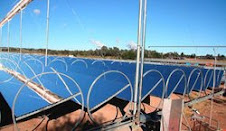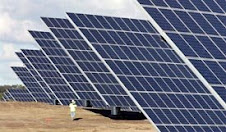America is addicted to foreign oil.
It's an addiction that threatens our economy, our environment and our national security. It touches every part of our daily lives and ties our hands as a nation and a people.
The addiction has worsened for decades and now it's reached a point of crisis.
In 1970, we imported 24% of our oil.
Today it's nearly 70% and growing.
As imports grow and world prices rise, the amount of money we send to foreign nations every year is soaring. At current oil prices, we will send $700 billion dollars out of the country this year alone — that's four times the annual cost of the Iraq war.
Loading...
Projected over the next 10 years the cost will be $10 trillion — it will be the greatest transfer of wealth in the history of mankind.
America uses a lot of oil. Every day 85 million barrels of oil are produced around the world. And 21 million of those are used here in the United States.
That's 25% of the world's oil demand. Used by just 4% of the world's population.
Can't we just produce more oil?
World oil production peaked in 2005. Despite growing demand and an unprecedented increase in prices, oil production has fallen over the last three years. Oil is getting more expensive to produce, harder to find and there just isn't enough of it to keep up with demand.
The simple truth is that cheap and easy oil is gone.
What's the good news?
The United States is the Saudi Arabia of wind power.
Studies from around the world show that the Great Plains States are home to the greatest wind energy potential in the world — by far.

The Department of Energy reports that 20% of America's electricity can come from wind. North Dakota alone has the potential to provide power for more than a quarter of the country.
Today's wind turbines stand up to 410 feet tall, with blades that stretch 148 feet in length. The blades collect the wind's kinetic energy. In one year, a 3-megawatt wind turbine produces as much energy as 12,000 barrels of imported oil.
Wind power currently accounts for 48 billion kWh of electricity a year in the United States — enough to serve more than 4.5 million households. That is still only about 1% of current demand, but the potential of wind is much greater.
A 2005 Stanford University study found that there is enough wind power worldwide to satisfy global demand 7 times over — even if only 20% of wind power could be captured.
Building wind facilities in the corridor that stretches from the Texas panhandle to North Dakota could produce 20% of the electricity for the United States at a cost of $1 trillion. It would take another $200 billion to build the capacity to transmit that energy to cities and towns.
That's a lot of money, but it's a one-time cost. And compared to the $700 billion we spend on foreign oil every year, it's a bargain.
An economic revival for rural America.
Developing wind power is an investment in rural America.
To witness the economic promise of wind energy, look no further than Sweetwater, Texas.
Sweetwater was typical of many small towns in middle-America. With a shortage of good jobs, the youth of Sweetwater were leaving in search of greater opportunities. And the town's population dropped from 12,000 to under 10,000.
When a large wind power facility was built outside of town, Sweetwater experienced a revival. New economic opportunity brought the town back to life and the population has grown back up to 12,000.
In the Texas panhandle, just north of Sweetwater, is the town of Pampa, where T. Boone Pickens' Mesa Power is currently building the largest wind farm in the world.
At 4,000 megawatts — the equivalent combined output of four large coal-fire plants — the production of the completed Pampa facility will double the wind energy output of the United States.
In addition to creating new construction and maintenance jobs, thousands of Americans will be employed to manufacture the turbines and blades. These are high skill jobs that pay on a scale comparable to aerospace jobs.
Plus, wind turbines don't interfere with farming and grazing, so they don't threaten food production or existing local economies.
A cheap new replacement for foreign oil.
The Honda Civic GX Natural Gas Vehicle is the cleanest internal-combustion vehicle in the world according to the EPA.
Natural gas and bio-fuels are the only domestic energy sources used for transportation.
Cleaner
Natural gas is the cleanest transportation fuel available today.
According to the California Energy Commission, critical greenhouse gas emissions from natural gas are 23% lower than diesel and 30% lower than gasoline.
Natural gas vehicles (NGV) are already available and combine top performance with low emissions. The natural gas Honda Civic GX is rated as the cleanest production vehicle in the world.
According to NGVAmerica, there are more than 7 million NGVs in use worldwide, but only 150,000 of those are in the United States.
The EPA estimates that vehicles on the road account for 60% of carbon monoxide pollution and around one-third of hydrocarbon and nitrogen oxide emissions in the United States. As federal and state emissions laws become more stringent, many requirements will be unattainable with conventionally fueled vehicles.
Since natural gas is significantly cleaner than petroleum, NGVs are increasing in popularity. The Ports of Los Angeles and Long Beach recently announced that 16,800 old diesel trucks will be replaced, and half of the new vehicles will run on alternatives such as natural gas.
Cheaper
Natural gas is significantly less expensive than gasoline or diesel. In places like Utah and Oklahoma, prices are less than $1 a gallon. To see fueling stations and costs in your area, check out cngprices.com natural gas prices at pump.
Domestic
Natural gas is our country's second largest energy resource and a vital component of our energy supply. 98% of the natural gas used in the United States is from North America. But 70% of our oil is purchased from foreign nations.
Natural gas is one of the cleanest, safest and most useful forms of energy — residentially, commercially and industrially. The natural gas industry has existed in the United States for over 100 years and continues to grow.
Domestic natural gas reserves are twice that of petroleum. And new discoveries of natural gas and ongoing development of renewable biogas are continually adding to existing reserves.
While it is a cheap, effective and versatile fuel, less than 1% of natural gas is currently used for transportation.
Full article continues at: The Pickens Plan online text
Alternative Energy Links:
Windpower Stocks Investing
Geothermal Energy Companies
The Pickens Plan Analysis and Commentary
Renewable Energy Investments Funds
Recent News articles on The Pickens Plan






